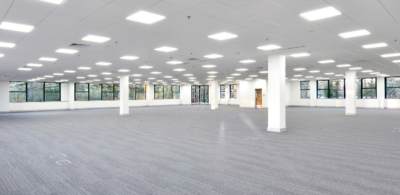Corporate real estate occupiers typically fall into one of three different categories, which I reference as “Mindsets.” Those that view corporate real estate (CRE) as:
- a commodity whose Cost should be managed as aggressively as possible;
- a strategic asset that can provide Value to other aspects of the business; or
- those who are Agnostic – they acknowledge the possibility that CRE could be more than a commodity but lack a philosophy or language within the corporation to effectively measure the potential value.
Each organization employs at least one Mindset and I’ve seen a marked shift from a Cost to Value Mindset over my 19 years in this industry.
Cost Mindset
Organizations with a Cost Mindset analyze CRE almost exclusively through the financial lens. Because of our Midwest orientation and proclivity for generating the lowest cost real estate solutions for a given market, my team has many CRE clients with this mindset. The lowest cost alternative that fits relatively basic space program requirements wins. “Cost” is defined differently for each organization. For example, some of our clients are focused on a cash-cost “run rate” or EBITDA impact without as much regard to the capital expenditures to implement a given solution. For others, it’s the all-in project NPV. CRE managers are rewarded primarily for how much cost is pulled out of the portfolio each year. These organizations are often heralded by their investors for their disciplined approach to managing margins in cost-competitive industries and for the majority of their portfolio, this is the appropriate approach.
For manufacturing sites that are expensive to relocate, for companies whose culture extols the virtues of cost leadership above all else, or when labor availability isn’t affected by the facility condition, a Cost Mindset may be warranted.
Value Mindset
I’ve seen a marked shift to a Value Mindset over the past 15 years. It’s a trend that transcends the business cycle (though certainly slowed down). The Value Mindset is primarily a function of (a) space that is more readily differentiated by advances in design, furniture and interactive technologies, (b) the need to increase collaboration between employees, since innovation is essential to company success, if not mere survival, and (c) increased competition for the best labor.
Function (c) has historically been the primary driver and cannot be understated. If there is not sufficient competition for labor (i.e. back office, lower wage functions), then the ROI in the improved environment is low. However, my CRE advisory team has a call center client that’s in a war for good (albeit cost effective) talent. Between parking and rent, they increased per-square-foot total cost of occupancy (TCO) by 80% in a relocation. How could a cost conscious company in a margin-constrained business justify this? They densified the space (from 145 to 134 sq. ft. per employee) and justified the per-seat rent increase in hopes they can generate 2.8% more productivity (breakeven threshold). The increased rent expense would also be paid for by a 0.86% reduction in their employee turnover rate (or some lower combination of the two). Given these low payback thresholds, and plans to grow the workforce, the business was confident making the additional expenditures.
Function (a) above is a bigger factor today than in past years because better space is so much better today. Early in the last decade, a private equity/capital management client of mine spent $350/sq. ft. for a lavish and impressive space – ego space possessed little additional utility beyond brand. Today, a well-known tech client of mine spends $290/sq. ft. 20% of that cannot be seen (i.e. Mechanical, Electrical & Plumbing) but makes for a more comfortable occupancy. Another 25% is Audio/Visual and other technology-related enhancements that provide for more dynamic and rewarding interactions between employees. The balance is spent on creating an environment that draws employees into the space and gets PR for “best workplace” or “best place to work” awards. If you get Function (a) right, Function (b) is a natural result and drives innovation.
Agnostic Mindset
It’s the CRE managers of companies with an Agnostic Mindset that have the biggest opportunity to drive change in their organization. These organizations acknowledge that environments might be able to generate top-line revenue growth (e.g. employee productivity or innovation)) by improving employee productivity, accessing better talent and driving innovation but lack a c-suite directive/understanding. Oftentimes, these companies are beset by ambiguous cultures, low employee engagement scores, or lackluster recruiting and CRE is not a widely accepted solution. For these companies, it’s the responsibility of the CRE manager to create the business case for facilities investment (assuming said manager believes that such an investment can in fact help the organization).
The misalignment is often with companies that apply a Cost Mindset across their CRE portfolio. For an organization in competition for labor (i.e. headcount growth or in a tight labor market), that desires to maintain/improve employee engagement; is focused on employee culture; or where brand is important, the Value Mindset is warranted for at least a portion of the employee population and/or CRE portfolio. The biggest impediment is often how to prove that CRE is an effective solution for which there is a measurable ROI. More on that to come.

 Colliers Insights Team
Colliers Insights Team
 Aaron Jodka
Aaron Jodka
 Andrew Steele
Andrew Steele

 Sheena Gohil
Sheena Gohil